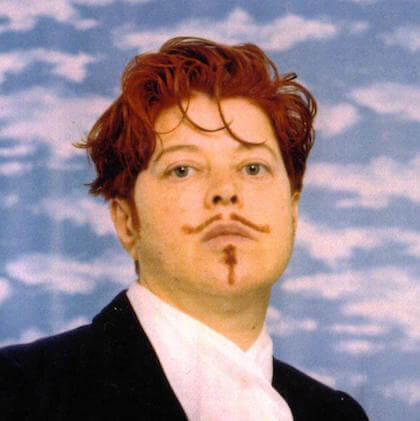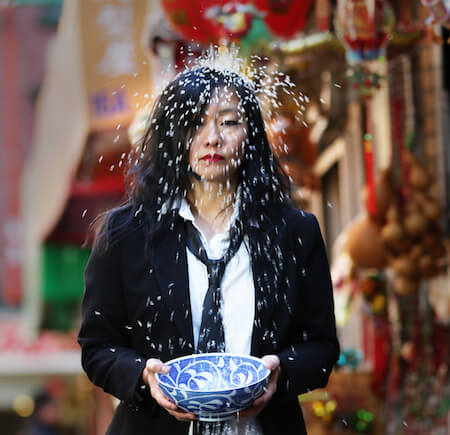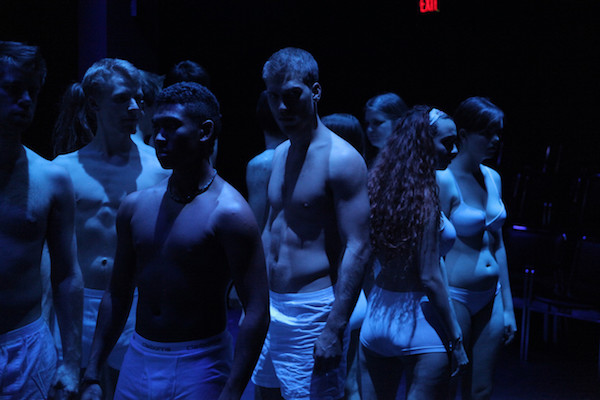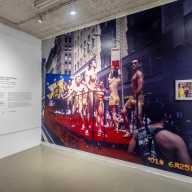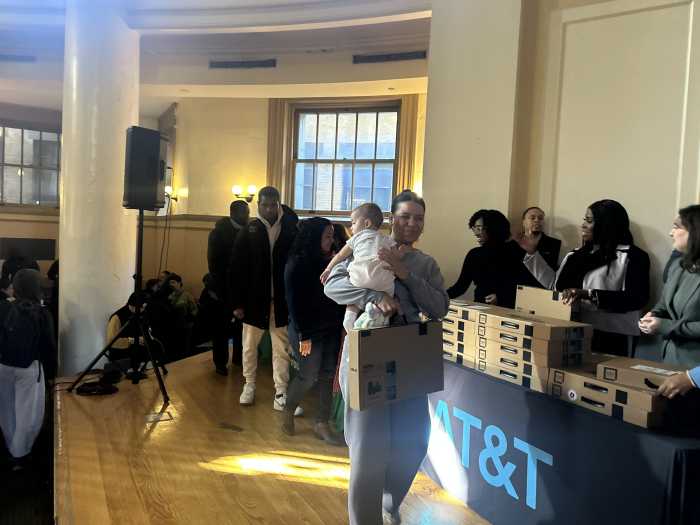Scottish-born performance artist Diane Torr was the drag king of kings. | FACEBOOK.COM
Sunday afternoon, I gussied myself up and was at the door putting on my red shoes when I realized I was still wearing puffy white athletic socks. I was going to a memorial at Dixon Place for Diane Torr, a remarkable artist, extraordinary human, and king of all drag kings everywhere, who died in May. So of course I stopped and changed.
The first time I met Diane, we were both on the bill for a fundraiser at Jennifer Monson’s Williamsburg loft that in 1992 did double duty as a dance studio and performance space called the Matzoh Factory.
There was nothing legendary about the encounter. I had to piss and she was hogging the bathroom. “Come on in,” she said in her slightly Scottish lilt. “Don’t mind me.” And when I hesitated — because I’d never met this slightly stocky woman in trousers and a man’s shirt, squinting in concentration as she used eyeliner or something to draw a beard on her face, or maybe it was a mustache — she said, “I promise not to look.”
PERSPECTIVE: A Dyke Abroad
I wasn’t so sure. She had a wicked gleam in her eye. And as a newly minted dyke, nearly fresh off the bus from Kentucky, I declined the offer, and had to read my poems with a busting bladder. Of course I almost peed myself when she performed.
Diane did experimental dance, performance, and film, but that night she was my first drag king, and her work shook me as much as the Five Lesbian Brothers, whom I’d seen not long before and were so unapologetically raunchily, lustfully, and lesbianishly perverse that I blushed all night long. As for drag performers, I’d seen drag queens in their high heels and big hair at a gay bar in Lexington where there were rumors of knife fights. And then again in New York en masse the time I’d been caught in the middle of the Halloween Parade.
But Diane was something else. She crackled with an energy fueled in part by anger, sex, and more than a little mischievous glee as she crossed boundaries you weren’t supposed to. A woman making dick jokes and pulling one out of her pants!? Impossible. How she strides across the floor! How her form grows in mass and density as her largely feminine body accepts the mantle of masculinity!
Her performance was alternately an exploration, a critique, and maybe, revenge. She ran away from a violent, alcoholic father, and got dumped in reform school for her pains, where she had to fight to be allowed an academic education. She never took “no” for an answer, and won, of course, even going on to college. Then, in ‘70s London, got radicalized as a feminist and Marxist, and studied dance before she moved to New York in ‘76 and discovered the downtown art and performance scene. She wasn’t the only one who worked as a go-go dancer to pay the bills, but she was one of the few to defend her rights.
All that was in the delight and power she claimed with every step in front of the crowd at the Matzoh Factory. Yeah, this girl from Aberdeen that was supposed to be a shop assistant or factory worker can put on a suit and tie and take up as much space as you, you fucking wanker. There’s not some magic power in your body.
She was committed to sharing the experience through her drag king workshops, which she’d launched just a couple years before. She later renamed them “Man for a Day,” when drag kings exploded in popularity, leaning more and more toward entertainment and humor.
As hilarious as she could be, her “Man for a Day” project, teaching women to pass, wasn’t a joke. And certainly not just a “performance” meant to fuel the work of gender theorists, as that word “performance” increasingly minimizes the consequences of how we express gender. How we get beat up for it, raped, ignored, and marginalized.
At 5’3” she learned aikido to defend herself on the streets. In a clip of a documentary they showed at the memorial Sunday, she explained that part of the attraction of going out in drag was the vacation it gave her from being Diane. From being a woman in public. It wasn’t just about danger. “If you walk into a room as a man, you are seen. Walk in as a woman, and you’re checked out. By both men and women. To see if you are sexy. At least until you’re 35 or 40, then you aren’t seen at all.” As a man, though, she existed. Was suddenly human.
That’s the gist of what she said anyway. I wasn’t taking notes, and was suddenly overcome with loss at the sound of her voice in the room, her kind face. It is impossible that this artist, this groundbreaking human… is gone.
Kelly Cogswell is the author of “Eating Fire: My Life as a Lesbian Avenger,” from the University of Minnesota Press.

